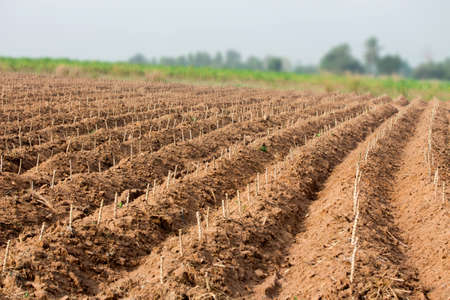For cassava farmers, weeds are one of the biggest threats to a healthy and bountiful harvest. If left unchecked, weeds can compete with cassava for sunlight, water, and nutrients, leading to poor yield and more work in the long run. One of the smartest ways to tackle this problem early is through the safe and effective use of herbicides, especially the use of pre-emergence herbicides like Rooter or post-emergence herbicides like Relianth and Gallant Super.
This blog explains how to apply herbicides the right way, keeping your crops, your soil, and yourself safe.
1. There is always an optimal application window, so timing is key.
You can’t just apply herbicides at any random time and expect good results — timing is everything when it comes to effective weed control in cassava farming. The right timing depends on whether you’re using a pre-emergence or post-emergence herbicide, and applying them at the wrong time can lead to wasted effort, crop stress, or poor weed control.
We recommend that:
- Pre-emergence herbicides should be applied immediately after planting your cassava cuttings, before any weeds have started to sprout. For the best results, apply just before a light rain or lightly water the soil afterward to help activate the herbicide.
- Post-emergence herbicides should be applied when weeds have emerged and are actively growing, ideally at the 3–4 leaf stage. Spraying too early may miss the target weeds, and spraying too late may lead to tougher, more resistant growth.
Note: Avoid spraying when the soil is too dry, overly wet, or right before a heavy rain, as it can wash away the herbicide and reduce its effectiveness.
2. Always follow the instructions on the label
Some farmers think that using more herbicide will give better results, while others believe using less will help save money. But the truth is, both ideas can lead to problems. If you use too much herbicide, you can damage your cassava plants, harm the soil, and affect future harvests. If you use too little, the weeds may survive, and you’ll end up spending more time and money spraying again.
It’s important to get the quantity just right.
If you’re not sure how much to use, don’t guess. Always check the instructions on the label. And if you’re still unsure, feel free to reach out to us on any of our social media pages or speak to the nearest agricultural extension officer.
Note: We recommend using only clean water for mixing/diluting the herbicides.
3. Safety first: your health is as important as your harvest.
When spraying herbicides, it’s important not to take chances with your health or the environment. Saro Agrosciences herbicides are made with safety in mind and are generally safe when used correctly. However, proper handling is still very important to avoid unnecessary risks.
Always follow these safety steps:
- Wear long-sleeved clothing, gloves, boots, and a face mask to protect your skin and lungs
- Keep children, pregnant women, and animals far away from the spraying area
- Walk backwards while spraying so you don’t step on areas you’ve already treated
- After application, wash your sprayer thoroughly with clean water and safely store leftover herbicide in a cool, dry place away from food and children
- After application, do not forget to wash your hands, clothes, and equipment after use.
Note: Avoid spraying on windy days to reduce drift onto nearby crops or people.
Herbicides are a valuable tool for cassava farmers. They help save time, reduce labour, and boost yields — but only when used the right way. Don’t take chances with guesswork or shortcuts. We’re here to support you with the right information and products every step of the way.

Leave a Reply